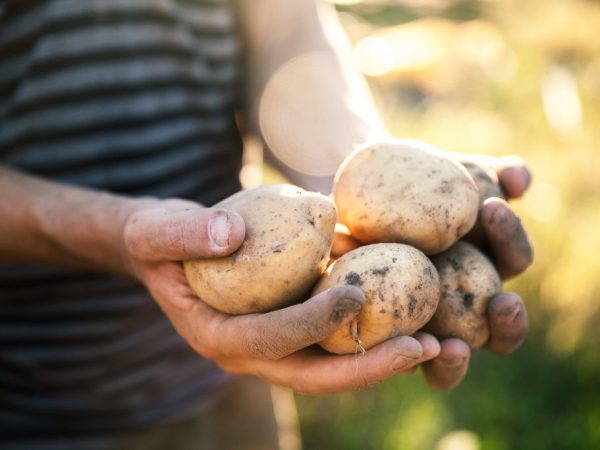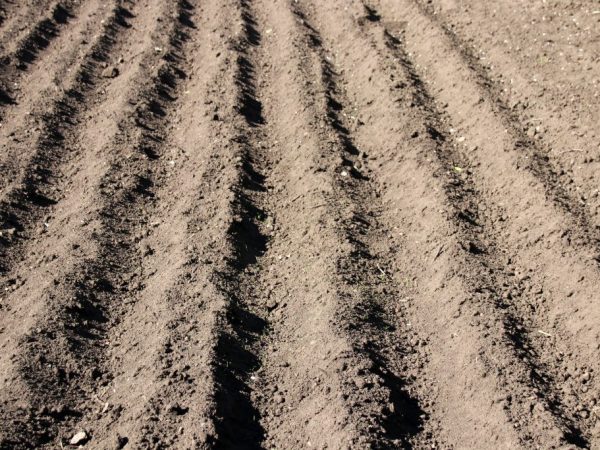Characteristics of Veneta potatoes
Vegetable farmers and hobbyist gardeners try to cultivate early varieties. This makes it possible to get production at a time when other crops are just forming bushes. One of these plants is the Veneta potato. He has positive reviews from experienced gardeners, and is liked by all potato lovers. This variety can be grown in the Central, North Caucasian, Volga and Ural regions. It does not require maximum care.

Characteristics of Veneta potatoes
Description of the variety
This is a dessert variety with high taste. Full ripening of potatoes to technical ripeness takes 70 days. Observing the correct cultivation technique, more than 230 c / ha can be harvested. With an earlier harvest, the yield will be less: after 1.5 months - 150ts, after 2 months - 200ts.
Veneta potatoes do not lose their varietal qualities when planting tubers of the second and subsequent generations. Therefore, you can collect your own planting material, lay it in storage and cultivate potatoes annually.
Description of bushes
The bushes grow sprawling. Their height reaches 70cm. The bush consists of 6 - 8 straight, ribbed stems. They carry a lot of potato-type leaves. The leaf blades are wavy, painted in light shades of green.
The tops of the shoots are decorated with tassels of simple flowers. Five-petal corollas of white or cream color. During seed propagation, to create new varieties, they are artificially pollinated and get elite seeds. In private households and in farm fields, flowers are naturally pollinated. The ovaries do not matter, but a small number of them remain on the bushes.
Description of tubers
Veneta potato tubers are rounded oval. The skin of young potatoes is thin, yellow. The pulp is firm, lighter in color. Eyes are almost invisible on the surface of the tubers.
There are about 12 tubers in the fruit nest. The weight of each of them can be from 60g to 90g. At the stage of technical maturity, the crop is resistant to mechanical damage. This characteristic of the variety makes it possible to harvest it with a combine.
Only ripe tubers can be laid for storage, the younger ones will rot. The Veneta variety is well preserved. Potatoes do not lose their taste for up to 1 year.
Advantages of the Veneta variety
Considering the reviews of potato growers from different regions, we can conclude that it has some advantages over other early varieties.
- The tubers contain up to 15% starch and taste great.
- The bushes are drought-resistant, but with a lack of moisture, the yield decreases.
- The product is suitable for all methods of cooking food.
- The plant is immune to almost all viruses in the tubers.
Drought resistance is relevant when planting a variety in the middle lane of the country, where there is little rainfall. A rainy and cool summer will also not affect the yield of quality products, which will be left for storage or consumed in a young form.
Young potatoes are suitable for cooking dishes that include spicy herbs and sour cream or vegetable oil. When frying and cooking casseroles, the shape of the potatoes is not lost. The puree turns out to be light, creamy in color.
The description of the advantages will not be complete, if not to say that the Veneta variety is not damaged by the virus of wrinkled and banded mosaic and cancer of the nightshade crops. In areas with this variety, there is no golden potato cyst nematode, a pest that can destroy the entire crop.
Disadvantages of Veneta potatoes

The plant is prone to damage by late blight
Against the background of many advantages, the variety has some unpleasant characteristics.
- Potatoes are sensitive to high temperatures.
- It can be affected by late blight, along the tops.
- It is necessary to plant it in clay soils on high ridges.
Dry soil that receives little moisture, together with high ambient temperatures, can significantly reduce yields. Therefore, the cultivation of this type of potato in the southern regions and in the Crimea will be unprofitable.
Preparation of the area for planting
In the fall, you need to decompose humus in the area intended for growing potatoes. For 1 hundred square meters, you need to make 40 buckets. Then dig up the ground deeply and thoroughly.
The characteristic of the Vinet variety does not allow growing it on the site where the nightshade crops grew before. Only after 3 years will it be possible to cultivate tomatoes or potatoes on it.
The predecessors of potatoes should be:
- grain crops;
- peas;
- beans;
- spices.
Mustard is often used as green manure to fertilize the soil. In the fall, it is mown and buried in the ground.
Preparation of planting material
A month before planting in the ground, you need to select suitable tubers, which were specially left for storage, as planting material. They should be practically the same size, with well-defined eyes. Tubers damaged by wet or dry rot are not allowed for reproduction.
To strengthen seed potatoes, it must be treated with a boric acid solution. If the tubers are large, then they are cut into 2 parts lengthwise. Sections are dried or treated with wood ash.
After that, they are laid out in boxes in 1 layer and put on germination. Sometimes they are exposed. Then solanine is formed in the tubers, which is able to protect plants from pests and diseases in the first time after planting.
Landing in the ground

Prepare the field for planting
The area is marked on landing rows, between which there should be a distance of 50 cm. If you plan to grow potatoes on the ridges, then they are formed at a distance of 70 cm from each other. The height of each comb should be 25cm.
At a distance of 25 - 30 cm, one after the other, they dig planting holes, up to 10 cm deep. At the bottom, you can put a handful of dry onion husks, which will drive the Colorado beetles out of the soil. Sometimes a handful of ash is added.
Put tubers on top, sprouts up and sprinkle with soil. Everything must be done carefully so as not to break fragile young shoots. The surface is leveled and the planting is left until shoots appear.
Plant care
After the emergence of shoots on the surface, if there is a threat of frost, they must be carefully sprinkled with soil. Further actions are reduced to the following activities:
- weeding and loosening of the earth;
- hilling and fertilization;
- watering row spacings;
- pest control.
Weeds need to be removed periodically. In this case, weeding must be carried out so as not to break the stems and not to disturb the root system of the bush.
Fertilizing potatoes
The description of the variety advises hilling at a height of about 20cm. Before that, nitrogen fertilizers and humus are scattered in the area of the stems.Add 20 g of ammonium nitrate to a bucket of mullein or bird droppings.
You can use superphosphate, sulfate and potassium chloride in the second feeding. It is carried out when the plant is in the budding phase. For the third time, they are fed with a complex fertilizer, which includes nitrogen, potassium and phosphorus.
Fertilization and watering are most often combined so that the soil does not sour from excess moisture. Water abundantly, at the root or between the ridges. At the same time, they try to prevent water from getting on the leaves. In sunny weather, the drops can create a magnifying glass effect and the plant will burn.
If the potato grower sees that the bush is very lush, and the shoots are large, then there is enough nitrogen in the soil. At the next top dressing, it is better not to add ammonium nitrate to the fertilizer.
Pest control
Colorado beetles are frequent guests on potato bushes. To exclude their appearance in the early stages, you need to process the tubers with Prestige before planting. But beetles can fly from neighboring areas.
Experienced potato growers recommend picking adult insects, their eggs and larvae by hand in the gardens. With a large infection, insecticides are used, such as Decis, Aktelik, Karate and many others. When working with poisons, you must follow the rules of protection and personal hygiene. Pets are not allowed on the site.
There are folk methods of dealing with insects. Prepare an infusion of wormwood and ash 1: 1 and pour 10 liters of hot water. After cooling, the liquid is carefully drained, leaving a thick mixture at the bottom of the dishes, and the bushes are sprayed with the solution.
The simplest methods of struggle are planting marigolds, garlic, beans and beans between potato bushes. Beetles do not tolerate such a neighborhood and leave the site.
Conclusion
By planting an early variety of Veneta potatoes, and following all the recommendations, we will get tasty and large tubers, suitable for eating after various methods of heat treatment. In winter, you can indulge yourself with crumbly jacket potatoes, delicious pancakes or dumplings. Products from their own garden will be environmentally friendly, vitamin, and most importantly grown on their own, with care and attention.


